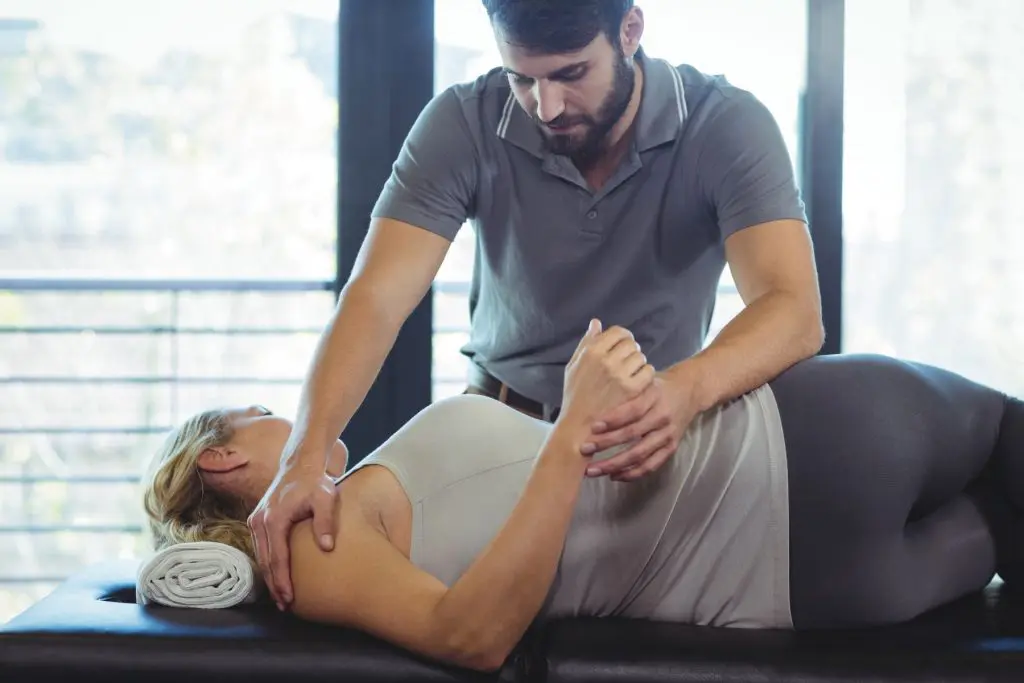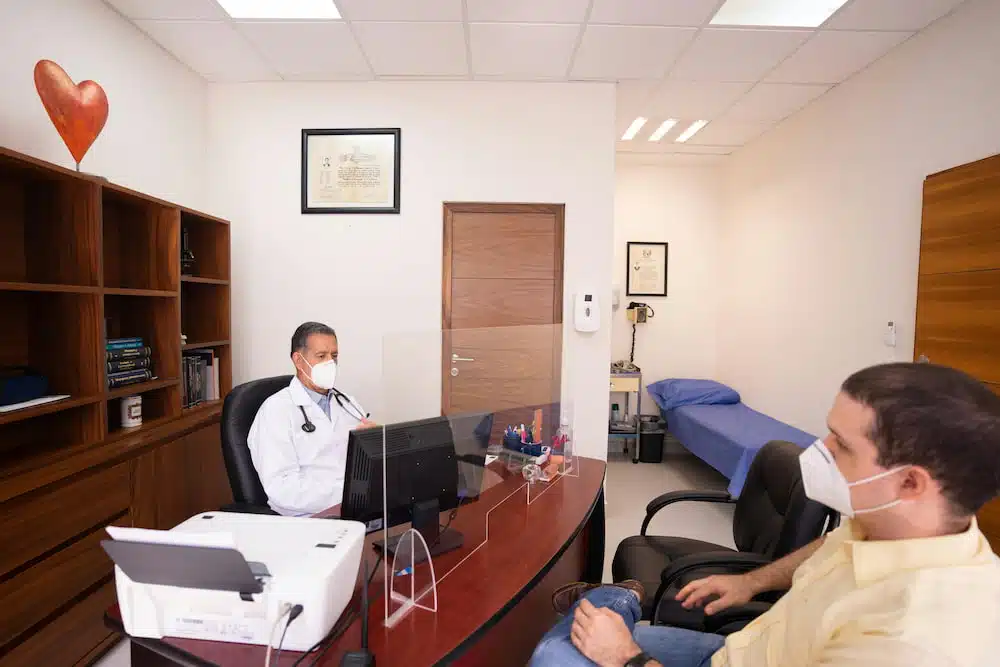Physical therapy plays a crucial role in herniated disk treatment, offering a variety of benefits for individuals experiencing pain, limited mobility, radiating pain, or other symptoms associated with this condition.
A herniated disk, also known as a slipped or ruptured disk, occurs when the soft inner portion of a spinal disk pushes through a crack in the tougher exterior. This can lead to pressure on nearby nerves, causing pain, numbness, or weakness in the back, legs, feet, arms, or hands, depending on the herniating level in the spine. Physical therapy can help alleviate these symptoms and promote healing. Here are several of physical therapy’s benefits for herniated disks.
One of the most immediate benefits of physical therapy for a herniated disk is pain relief.
Physical therapists employ various techniques, such as heat or cold therapy, manual manipulation, and soft tissue mobilization, to reduce inflammation and alleviate pain.

Through exercises and stretches, the therapist can also help relieve the pressure on nerves caused by the herniated disk. Techniques like traction, which gently stretches the spine, can reduce the bulge of the disk and relieve nerve compression.
Over time, these methods can provide significant relief and help individuals manage their pain more effectively without relying on medications. Performing prone press-ups or cobra is also an effective way to relieve pressure on the nerve and decrease pain and symptoms.
A herniated disk can severely limit a person’s range of motion, making it difficult to perform daily tasks such as bending, walking, or even sitting for extended periods.
Physical therapy includes exercises that focus on improving flexibility and mobility in the affected area, which helps increase functional movement. A therapist will guide patients through a series of stretches and strengthening exercises aimed at the spine, lower back, and legs. These exercises help restore mobility by targeting muscle groups that support the spine, promoting proper alignment and preventing further injury.
Among physical therapy’s benefits for herniated disk, strengthening the muscles surrounding the spine, particularly the core and lower back muscles, is key.
Stronger muscles help support and stabilize the spine, reducing the stress placed on the vertebral disks. When the muscles in the back, abdomen, and pelvis are strengthened, they can help to absorb shock better and distribute forces more evenly throughout the body. This can help reduce the likelihood of further herniation or other spinal issues in the future. Targeted exercises also improve posture, which plays an important role in spinal health.
Physical therapy not only helps treat the current herniated disk but also focuses on preventing future injuries.

Through proper training in body mechanics, posture correction, and safe lifting techniques, physical therapists teach patients how to move in ways that minimize stress on the spine. Learning proper posture when standing, sitting, or sleeping can prevent the disk from further slipping or becoming more damaged.
Additionally, physical therapy can identify areas of weakness in the body that may contribute to an increased risk of future herniations, allowing for proactive strengthening and rehabilitation.
Unlike surgical options or prolonged use of pain medication, physical therapy offers a noninvasive, drug-free alternative to manage herniated disk symptoms. It can be used alone or in conjunction with other treatments, such as medication or injections, to avoid the risks associated with surgery.
Many individuals find that physical therapy provides effective pain relief and functional improvement without needing more invasive treatments. It also reduces the risk of complications that can arise from surgery, such as infection or nerve damage.
Postural correction is an important aspect of physical therapy for herniated disk treatment.
Poor posture, such as slouching or rounding the back, can place additional pressure on the spine and exacerbate symptoms. A physical therapist will assess the patient’s posture and recommend strategies to improve it. This includes exercises designed to align the spine properly and strengthen the muscles that support it. Correct posture reduces the likelihood of straining the back and can relieve discomfort caused by herniated disks.

Every individual’s condition is unique, and physical therapy offers personalized treatment tailored to the specific needs of the patient.
A physical therapist will assess the severity of the herniated disk, evaluate the patient’s overall health, and create a customized rehabilitation plan that focuses on the most effective techniques for that person. This individualized approach ensures that patients receive the appropriate care and guidance, which leads to better outcomes in terms of pain relief, mobility, and long-term spinal health.
By alleviating pain, improving mobility, and restoring strength, physical therapy ultimately enhances the overall quality of life for individuals with a herniated disk.
Patients are able to return to their daily activities, resume work, and enjoy hobbies or sports that may have been difficult or impossible during the height of their symptoms. With ongoing physical therapy, individuals can regain independence and confidence, leading to a more active and fulfilling lifestyle.
Physical therapy’s benefits for herniated disks are numerous, including pain relief, improved mobility, strengthened muscles, injury prevention, and a noninvasive approach to managing symptoms. By focusing on personalized care, posture correction, and rehabilitation exercises, physical therapy provides lasting solutions that help individuals recover and maintain a healthy spine.
Do you have a herniated disk? Reach out to us at Knoxville Spine & Sports to start your physical therapy and reclaim your quality of life. Call 865-337-5574 to schedule an appointment.
8029 Ray Mears Blvd, Suite 300
Knoxville, TN
37919
Phone: 865-337-5574
Monday
7am-12pm & 1pm-6pm
Tuesday
7am-12pm & 1pm-4pm
Wednesday
7am-1pm
Thursday
7am-12pm & 1pm-6pm
Friday
7am-12pm & 1pm-4pm
Saturday & Sunday
Closed